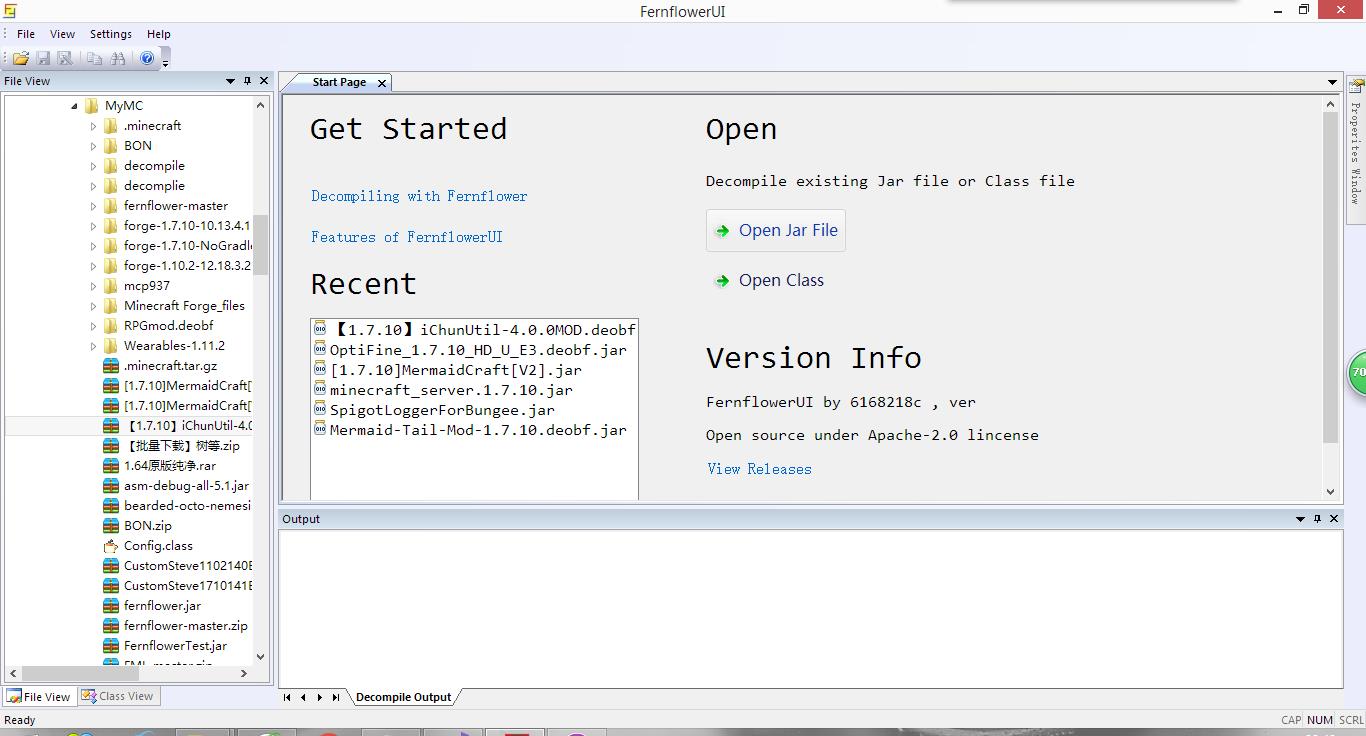

- #Intellij decompile jar how to#
- #Intellij decompile jar install#
- #Intellij decompile jar pro#
- #Intellij decompile jar code#
- #Intellij decompile jar zip#
#Intellij decompile jar code#

#Intellij decompile jar pro#
#Intellij decompile jar install#
either available in PATH (like when you install it with brew cask install ghidra on os-x or set-up manually).Requires a working installation of Ghidra (← Download) to decompile executables.Requirements: Binary executables (Ghidra / IDA Pro) Just make sure Java is available in your PATH. Other tools are bundled with the extension.Just install the latest JRE/JDK for your OS (e.g. Requires Java (11+) to be installed system-wide.Save the EVM byte-code in a file with extension. You can right-click → Download files to your local file-system right from the sub-workspace. The decompilation result is added to a temporary sub-workspace. Just right-click → Decompile on a supported executable and wait for the magic to happen. or IDAPro (Experimental, Windows Only for now).as supported by Ghidra Windows PE, Linux ELF, IOS, etc.Binary executables for various platforms.Wouldn't it be nice to just decompile the $h*! out of things right off the fingertips in Visual Studio Code? Well, here we go:
#Intellij decompile jar how to#
Hope these steps will make the question clear.Let's be honest, there is no reason to remember how to decompile stuff with the various tools available. I cant find the sutialbe option for the asterisk items. **IFernflowerPreferences.UNIT_TEST_MODE to if (ApplicationManager.getApplication().isUnitTestMode) "1" else "0")** IFernflowerPreferences.VERIFY_ANONYMOUS_CLASSES to "1", **IFernflowerPreferences.IGNORE_INVALID_BYTECODE to "1",** **IFernflowerPreferences.INDENT_STRING to indent,** IFernflowerPreferences.MAX_PROCESSING_METHOD to 60, **IFernflowerPreferences.BANNER to BANNER,** IFernflowerPreferences.NEW_LINE_SEPARATOR to "1", IFernflowerPreferences.LITERALS_AS_IS to "1",

IFernflowerPreferences.REMOVE_BRIDGE to "1", IFernflowerPreferences.REMOVE_SYNTHETIC to "1", IFernflowerPreferences.DECOMPILE_GENERIC_SIGNATURES to "1", hdc=0 -dgs=1 -rsy=1 -rbr=1 -lit=1 -nls=1 -mpm=60 -lac=1 IFernflowerPreferences.HIDE_DEFAULT_CONSTRUCTOR to "0",

Usage: java -jar fernflower.jar * + Įxample: java -jar fernflower.jar -dgs=true c:\my\source\ c:\my.jar d:\decompiled\įinally, The studio's nest options for decompiler list as follows according IdeaDecompiler.kt Third, run it, you will get the usage java -cp "/Applications/Android Studio.app/Contents/plugins/java-decompiler/lib/java-decompiler.jar". Applications/Android Studio.app/Contents/plugins/java-decompiler/lib/java-decompiler.jar Second, we can find it in the plugins directory. You can find the decompier is Fernflower. I made another instruction clue step by step.įirst, open your studio and search. If you don't have IntelliJ products installed, either download it now (available on ) or make your own decompiler executable from sources (available on Github). Java -cp fernflower.jar. -hdc=0 -dgs=1 -rsy=1 -lit=1. is the class that contains the main method to run the decompiler. However something like this works: java -cp fernflower.jar. + This JAR is not executable, so we can't run it using java -jar.
#Intellij decompile jar zip#
Allowed file extensions are class, zip and jar.Įxample: java -jar fernflower.jar -hdc=0 -dgs=1 -rsy=1 -lit=1 c:\Temp\binary\ -e=c:\Java\rt.jar c:\Temp\source\īe aware that if you pass it a ".jar" file for the source, it will create another ".jar" file in the destination, however, within the new ".jar" file, the files will be. : file or directory with files to be decompiled. Or see an excerpt from the instructions below. Follow instructions for IntelliJ JD plugin.


 0 kommentar(er)
0 kommentar(er)
